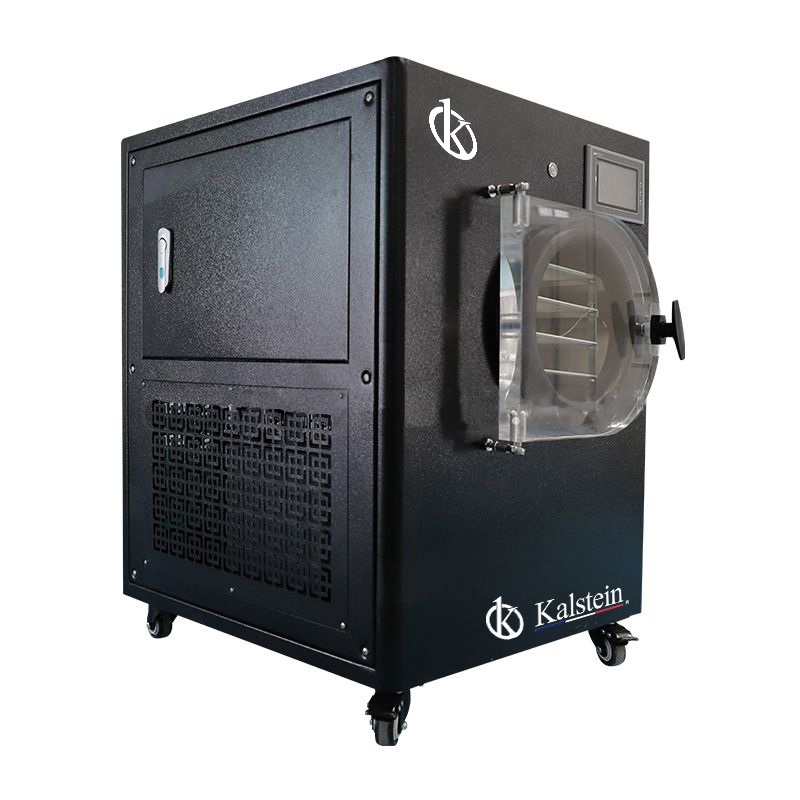Lyophilization is a crucial technique in many medical and research fields. This dehydration process, which preserves the biological properties of materials, is essential for the stability and efficacy of many products.
In this article, we will explore in detail how to use lyophilizers to achieve the best results, providing practical tips and step-by-step tutorials.
If you’re seeking a blend of innovation and quality, you’ve come to the right place. At https://kalstein.it/category-product/laboratory-line/freeze-dryer/ we offer you the luxury to explore our exclusive catalog of laboratory equipment. We manufacture each piece of equipment with a level of excellence. Our intuitive and agile online shopping channels are designed for your convenience, ensuring the friendliest prices. Don’t hesitate any longer, we bring science to life, it’s time to become part of our community. https://kalstein.it/
Understanding the Lyophilization Process
Lyophilization, also known as freeze-drying, is a preservation method that involves freezing the product and reducing pressure to remove water through sublimation. This process consists of three main stages: freezing, primary drying, and secondary drying.
Freezing:
In this first phase, the material is frozen at extremely low temperatures. It is essential to ensure uniform freezing to prevent ice crystals from forming that could damage the product’s structure.
Primary Drying:
During this stage, the pressure is reduced, and the water sublimates directly from the solid to the gaseous state. It is crucial to maintain appropriate temperature and pressure to prevent the product from collapsing.
Preparing the Material for Lyophilization
Proper preparation of the material is essential for a successful lyophilization process. Below are the necessary steps to prepare the material before introducing it into the lyophilizer.
Container Selection:
Use appropriate containers, such as vials or trays, that can withstand low temperatures and do not interact with the product. Ensure the containers are sterile to avoid contamination.
Loading the Product:
Distribute the material evenly in the containers. Uniform distribution facilitates homogeneous freezing and drying. Avoid overloading the containers to ensure efficient lyophilization.
Setting Up the Lyophilizer
To achieve the best results, it is crucial to set up the lyophilizer correctly. Here are the key parameters to consider when configuring the equipment.
Temperature:
Set the initial freezing temperature below the product’s eutectic point. During primary drying, gradually adjust the temperature to prevent product collapse.
Pressure:
Adjust the pressure to optimal levels during primary and secondary drying. Precise control of pressure is essential for effective sublimation and to avoid damaging the product.
Monitoring the Lyophilization Process
Constant monitoring of the process is vital to ensure the quality of the final product. Use the monitoring tools available in the lyophilizer to oversee each stage of the process.
Temperature and Pressure Sensors:
Sensors integrated into the lyophilizer provide real-time data on temperature and pressure. Ensure the sensors are calibrated and functioning correctly.
Real-Time Adjustments:
Based on the data collected by the sensors, make real-time adjustments to maintain optimal conditions. This includes modifying the temperature, pressure, and time of each stage as needed.
Practical Tips for Efficient Lyophilization
Implementing good practices can significantly improve the efficiency of the lyophilization process. Here are some practical tips to optimize the use of lyophilizers.
Regular Maintenance of the Equipment:
Perform regular maintenance on the lyophilizer to ensure its optimal operation. This includes cleaning the chambers and checking the mechanical and electronic components.
Staff Training:
Ensure that staff are well trained in using the lyophilizer. A deep understanding of the equipment and the process is crucial to avoid errors and maximize efficiency.
Troubleshooting Common Problems
Despite following all the steps correctly, problems can arise during lyophilization. Below are solutions to common problems that may occur during the process.
Product Collapse:
If the product collapses, review the temperature and pressure during primary drying. You may need to reduce the temperature more slowly to prevent collapse.
Contamination:
Contamination can be a serious issue. Ensure that the material and containers are sterilized and that the lyophilizer is kept clean. Review loading and unloading procedures to minimize the risk of contamination.
Lyophilization is an advanced technique that requires precision and care at every stage of the process. By following this detailed guide and adopting best practices, you can maximize results and ensure the quality and stability of your lyophilized products. With proper setup, constant monitoring, and efficient problem-solving, using lyophilizers can elevate your preservation and storage capabilities to the next level, reflecting the latest trends in medical technology and recent advances in laboratory research.

